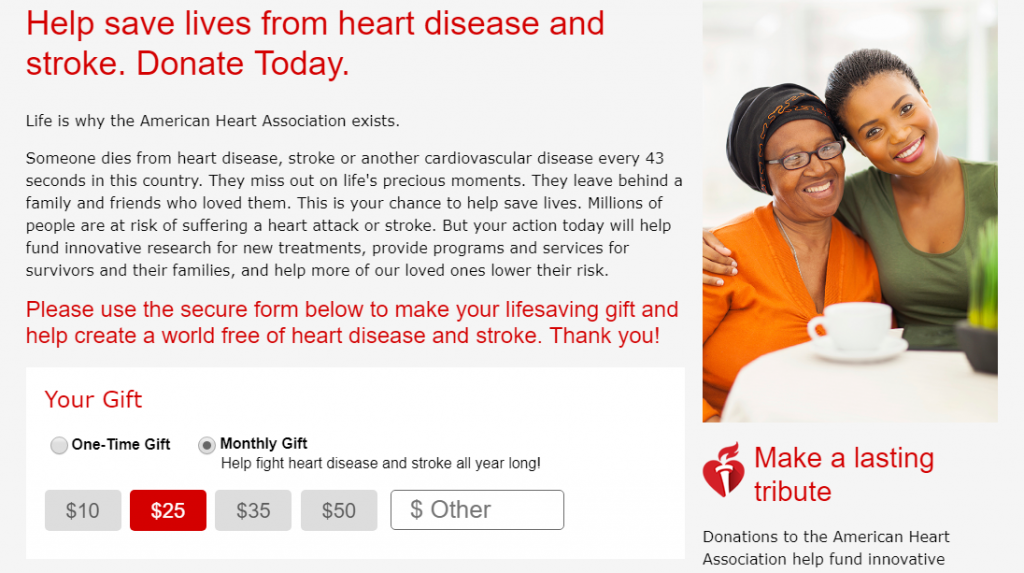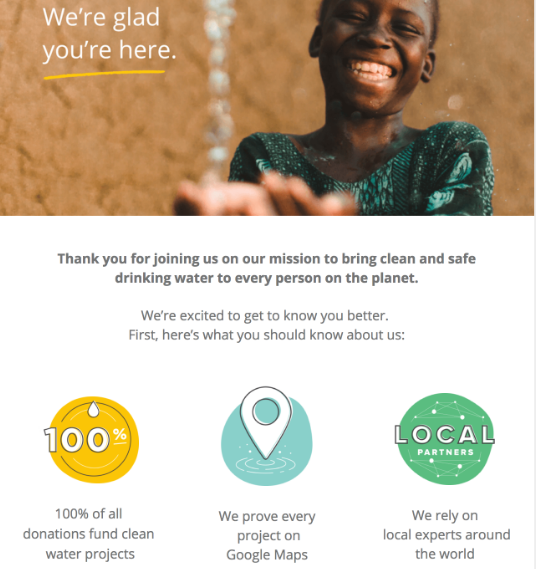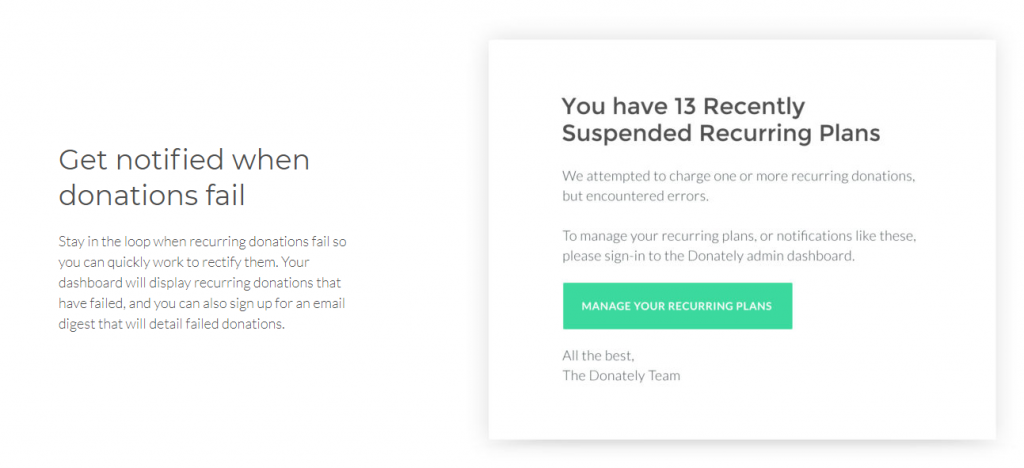
Let’s do some math for just a minute: the average monthly online donation is $42. Multiplying that by 100 donors = $4,200 a month.
Now, we multiply by 12 months in a year: $50,400.
What could you do with $50,000 a year? How many programs could you fund? Could you hire a new employee to ease the burden on staff?
Now, pretend you have 200 monthly donors and an extra $100,000 per year.
Monthly donors matter a great deal and tend to provide more long-term income for a nonprofit than the average one-time gift given online, which tends to be about $128. Which sounds better:100 donors who give a total of $12,800 in a year or 100 donors who give a total of $50,400 in a year?
Since we understand the importance of recurring monthly donations – let’s talk about how to secure these and how to maintain an existing monthly giving program.
Ask for Monthly Donations
This may sound like such simple advice, but in the whirlwind of securing major donors, sending out new giving appeals, and all the other tasks that take up a fundraiser’s time it can easily be forgotten. Find just one hour a week to devote to your monthly giving program and asking for this type of donation. Spend that hour calling a handful of donors you think would be receptive or crafting an email to ask for recurring donations.
Don’t forget the other ways to “ask” that might not be as obvious, like ensuring that monthly donation is a prominent feature in your online giving page. See how well American Heart Association does this:

While you can easily make a one-time gift, the emphasis is on making “a lasting tribute” and helping to fight heart disease “all year long!”
Share Milestones and Personal Stories
Donors always want to know where their money is going and what it is supporting. In fact, Millennial donors in particular want to be involved at a high level. It’s no longer enough to just take someone’s money and say it is going to a good cause – now you need to show and tell how it is supporting others. Spend one of the hours you blocked off crafting an email or other promotion to show people the progress you’re making.
Here’s an example of how Charity:Water shares their achievements and welcomes new donors:

Keep an Eye on Donations
The one major pitfall of monthly donation programs is credit card failure. There’s nothing worse you can do than set up this kind of program and then let it fail due to lack of monitoring. Credit cards expire, but your donors aren’t saying they no longer wish to give. It’s up to you to re-engage and get the updated information that will help your organization thrive. Over time, your rate of giving will decline dramatically if you don’t stay on top of things.
With that being said, a lot of credit card processing tools for nonprofits have built-in notification systems to let you know if you are losing out on donations.
Full disclosure: I have not used and am not terribly familiar with Donately (meaning this isn’t a recommendation to use them or anyone else) – but this is the kind of mechanism you’ll want to have in place for accepting donations:

Identify Potential Donors
If you already have a rock-solid approach to monthly donations, the last thought I’ll leave you with is this: find new donors. Strategize who is best in your database to approach for monthly giving – can they afford it? Are they likely to respond? These questions are tough, but important. And remember, if you have trouble answering these questions yourself or finding new donors interested in your cause, that’s where we come in.
AlumniFinder has helped countless nonprofits reach their donors, find new ones – and even save money by sending appeals to a smaller group of more highly engaged donors.
Ask us how to get started!
